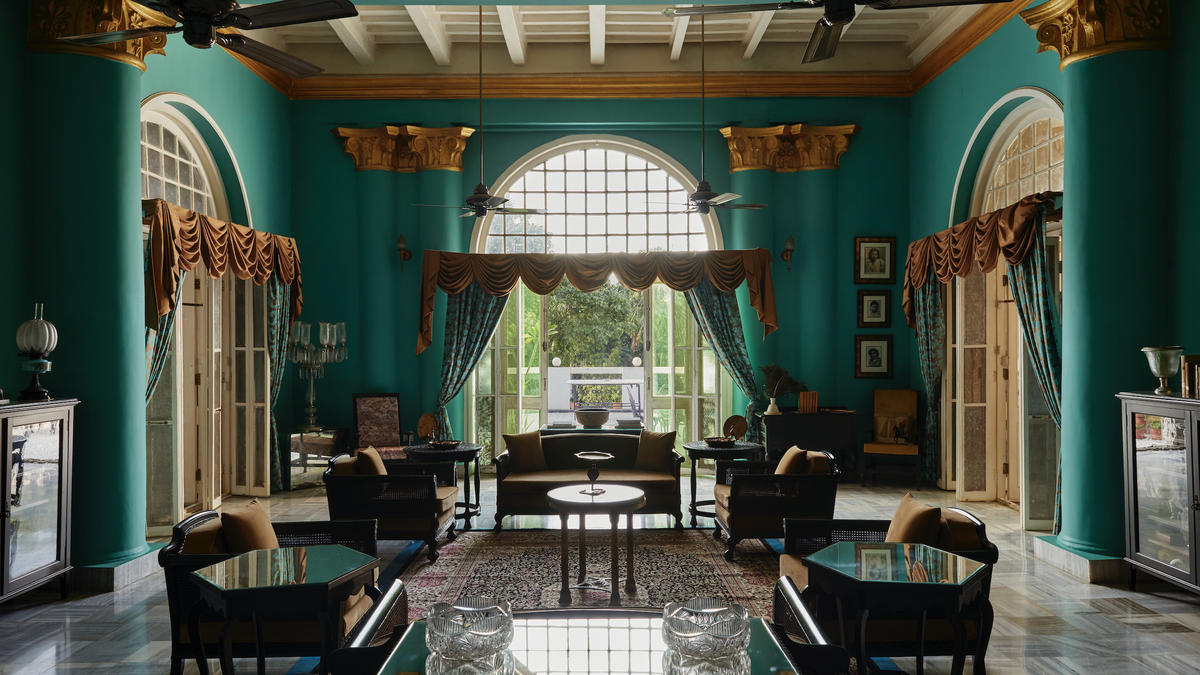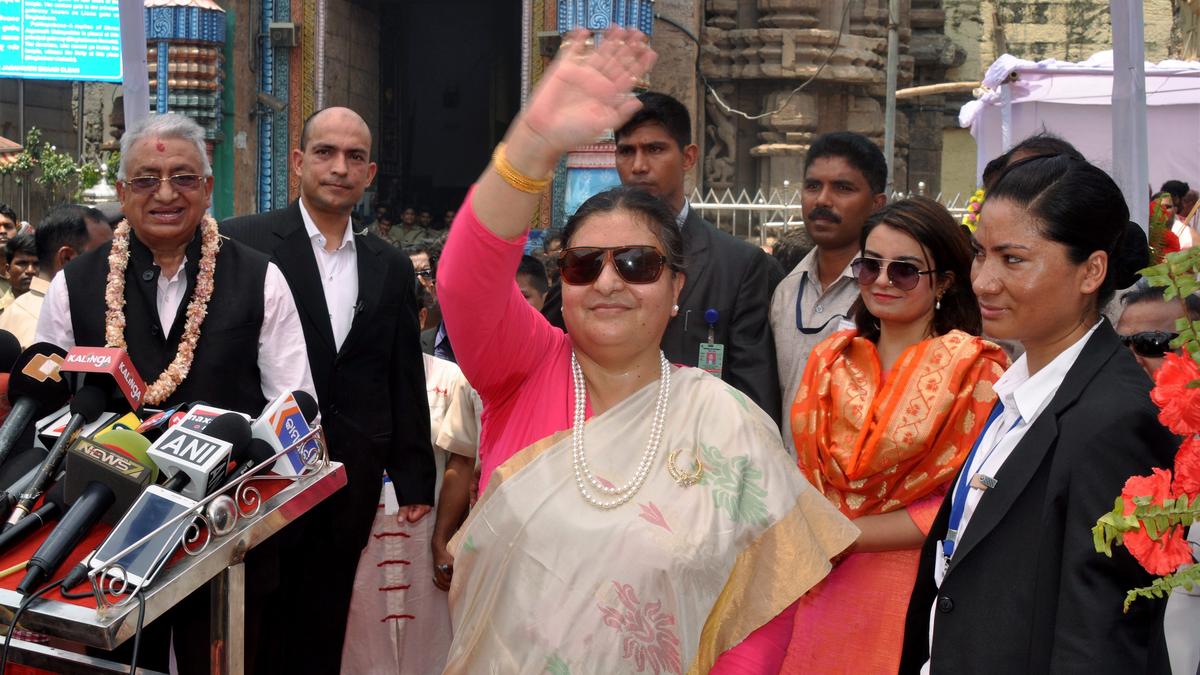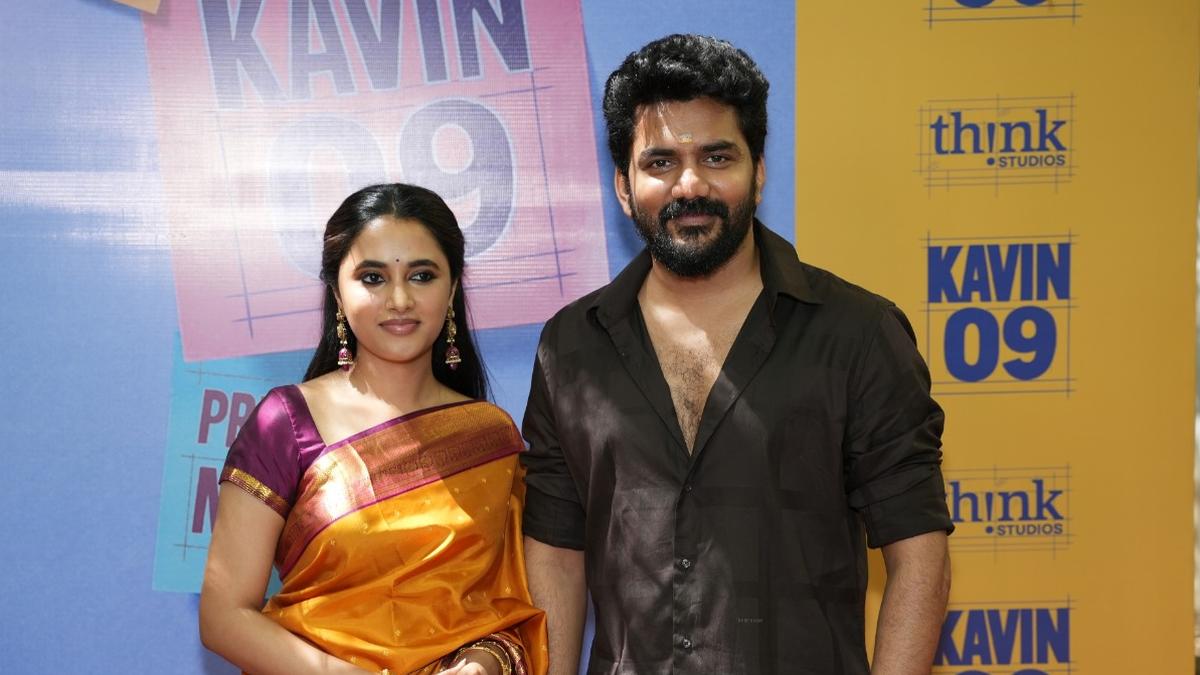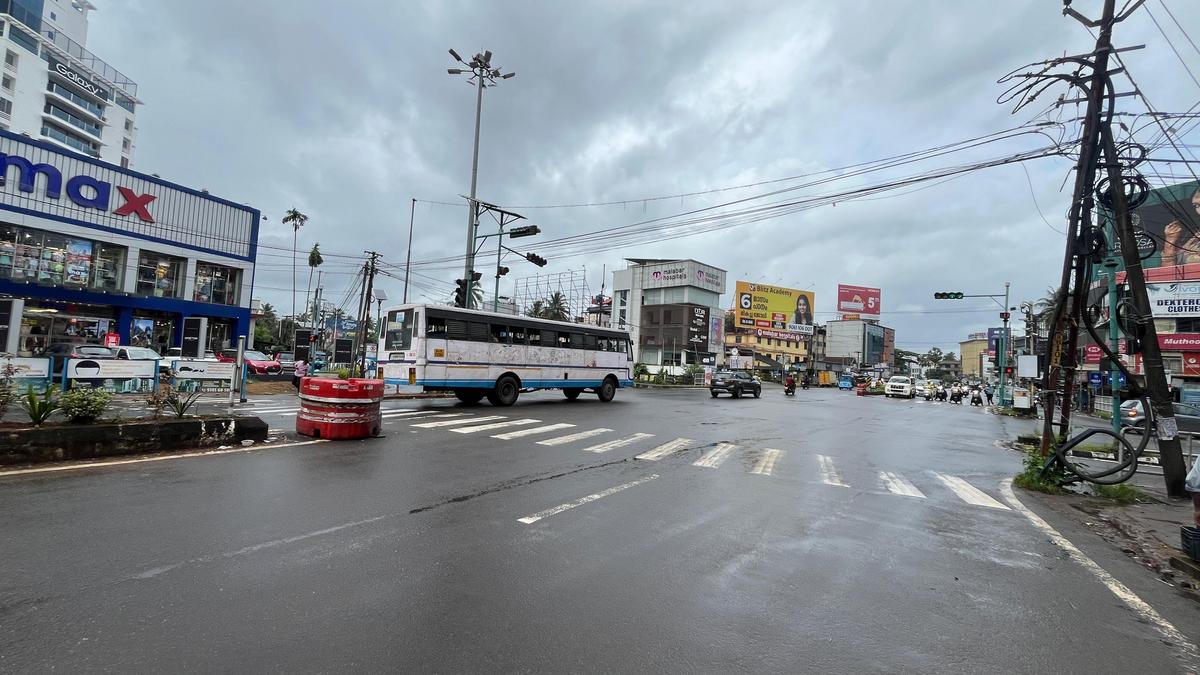At Baripada, a small town in Mayurbhanj district in Odisha, we take a sharp turn and find ourselves in front of white gates and a manicured driveway. The stretch in front of us, neatly paved and framed by bougainvillea on the sides, leads us to a large building, a palace no less, painted in bright buttercup yellow and white. It all feels straight out of a Wes Anderson film; the colours, the whimsy, and as I would later discover, the aesthetics and attention to detail inside as well.
Originally built in the early 1800s to host guests and visiting family members of the erstwhile royal family of Mayurbhanj, this historic residence has been welcoming visitors as a boutique property since 2019, a vision brought to life by next-generation royals and sisters Akshita Bhanj Deo and Mrinalika Bhanj Deo of the 48th generation of the Bhanj dynasty.
The sisters greet us warmly with a high tea that is ready and waiting under a canopy of mango trees at the palace gardens. It all does feel very Bridgerton-esque of course; except that we are clutching onto marigold garlands and woven shawls we were welcomed with instead of parasols.
“The original function of the Belgadia palace has always been to host…be it in the way of arts, culture, or even having people come in to celebrate different events and festivals. Opening the doors of the palace once again to welcome visitors in 2019 felt like we were coming full circle,” says Mrinalika. Post-independence, the royal family made the Belgadia palace their primary residence, having given up their sprawling palace to set up the MPC Junior College in Mayurbhanj.
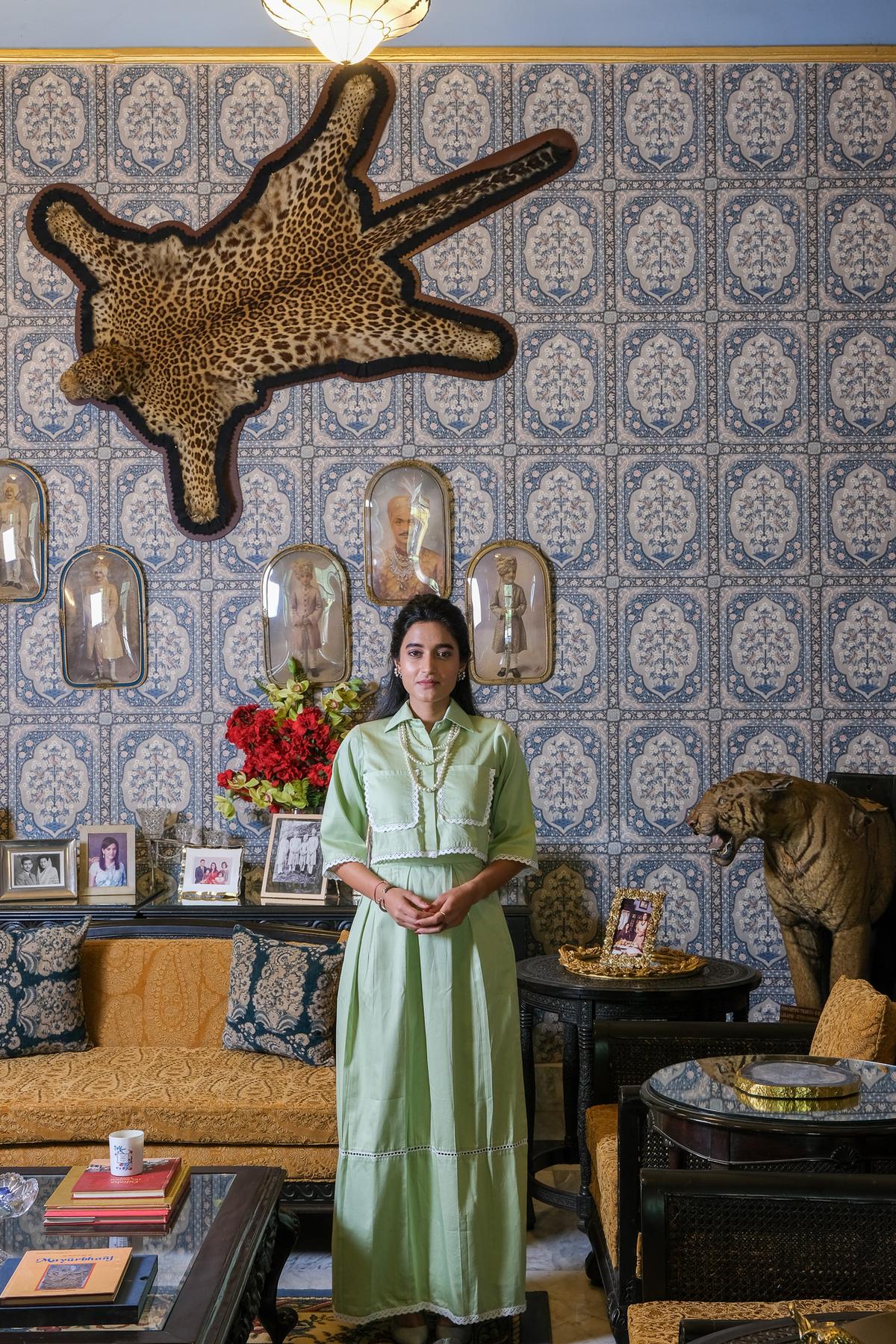
Mrinalika Bhanj Deo
| Photo Credit:
Special Arrangement
In throwing open the doors of the palace to guests as it always was always intended, Akshita and Mrinalika who have grown up with and immersed themselves in the history, art, and culture of their State, and the district of Mayurbhanj, are bringing these experiences to their guests. And for their guests, a stay at the Belgadia palace encompasses all of this along with the added excitement and intrigue of staying alongside the erstwhile royal family who also live on the property.
On our first evening there, we take in a chhau performance in the gardens, lit up with fairy lights, against the backdrop of the palace. As part of a three-day festival celebrating this martial, tribal and folk dance form organised by the Belgadia palace and Aadi Naad, we also learn about the palace and the family’s efforts in reviving this dance form. Mrinalika says they have been working closely with Project Chhauni, a local organisation promoting the Mayurbhanj chhau.
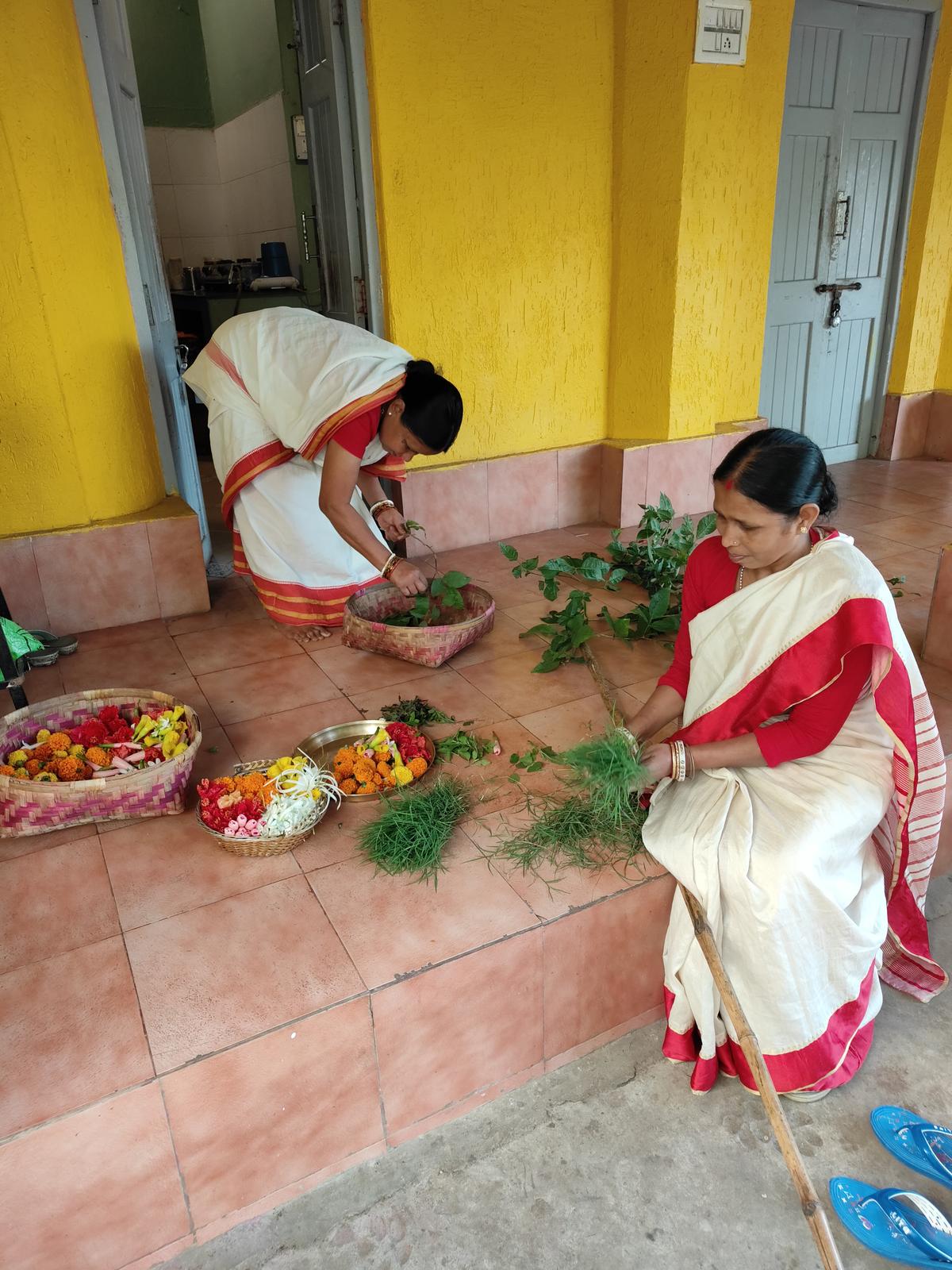
Staff members at the boutique property
| Photo Credit:
S Poorvaja
In the calm and stillness of daybreak is when Belgadia truly feels alive. On a walk around the palace grounds the next morning, I spot neatly labelled trees, at least 15 different bird calls according to another guest’s birding app, and palace staff members dressed in red and white saris getting flowers ready. The lush palace grounds seem perfect not just for hosting dance performances and a slew of cultural activities the palace patronises, but also for picnics, lazy long lunches at tables that can be set up outdoors, and even a game or two of croquet.
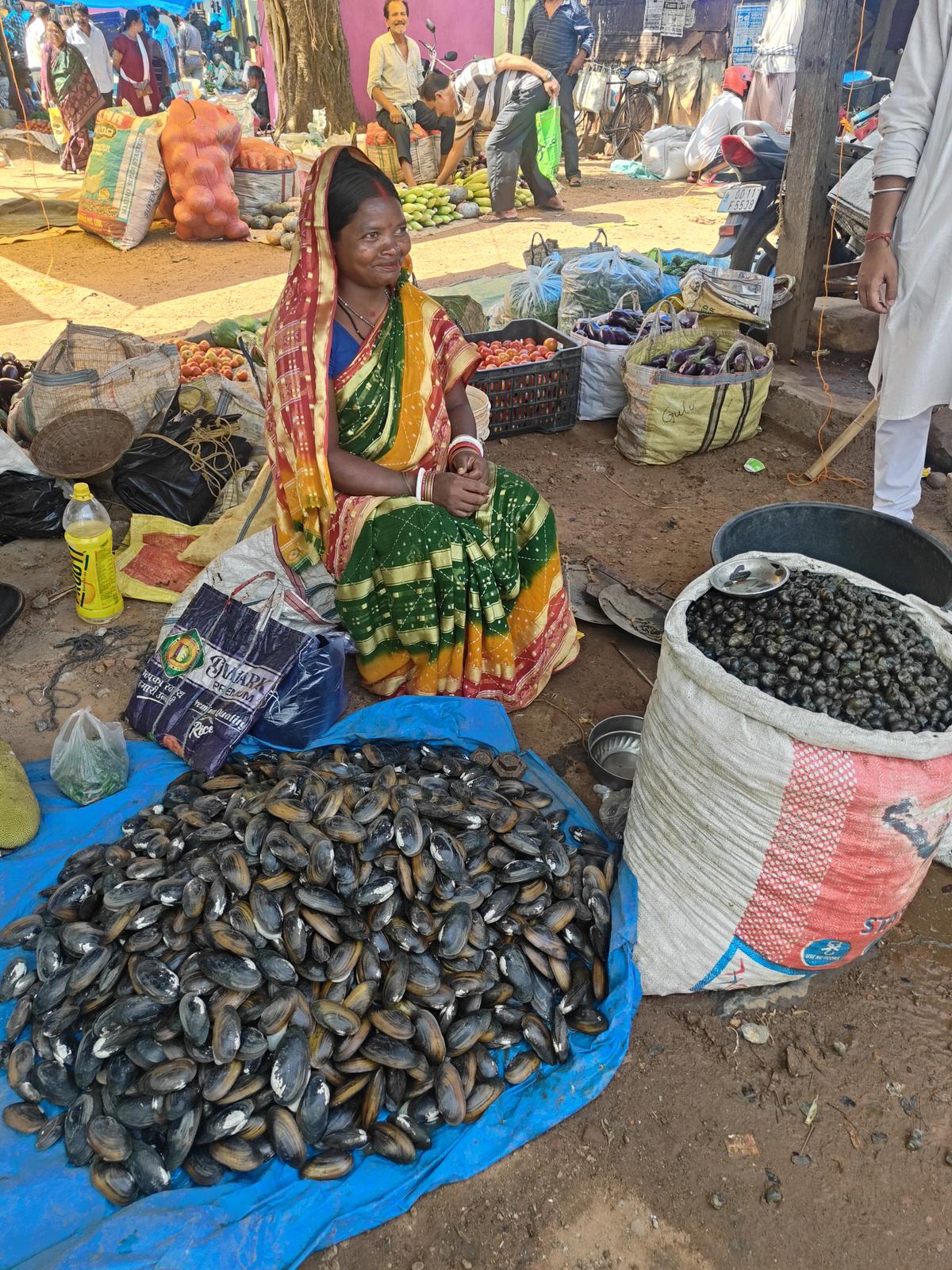
At the Baripada haat
| Photo Credit:
S Poorvaja
At the Baripada haat, a bustling bi-weekly market close by, there are vegetables, fruits, kitchen utilities, handwoven baskets, bamboo traps for fish, mussels and more. Mrinalika leads us through winding rows of sellers and we discover women selling the famous GI-tagged red ant chutney. Many of the guest experiences that The Belgadia Palace facilitates are tied to the tribal communities in the district. Among the many initiatives of the Mayurbhanj Foundation, set up by the family to work with the tribal communities are clusters in different villages weaving handicrafts made of sabai grass. At Salasahi, a village we visit, women are hard at work, deftly weaving stacks of sabai grass into ropes and baskets.
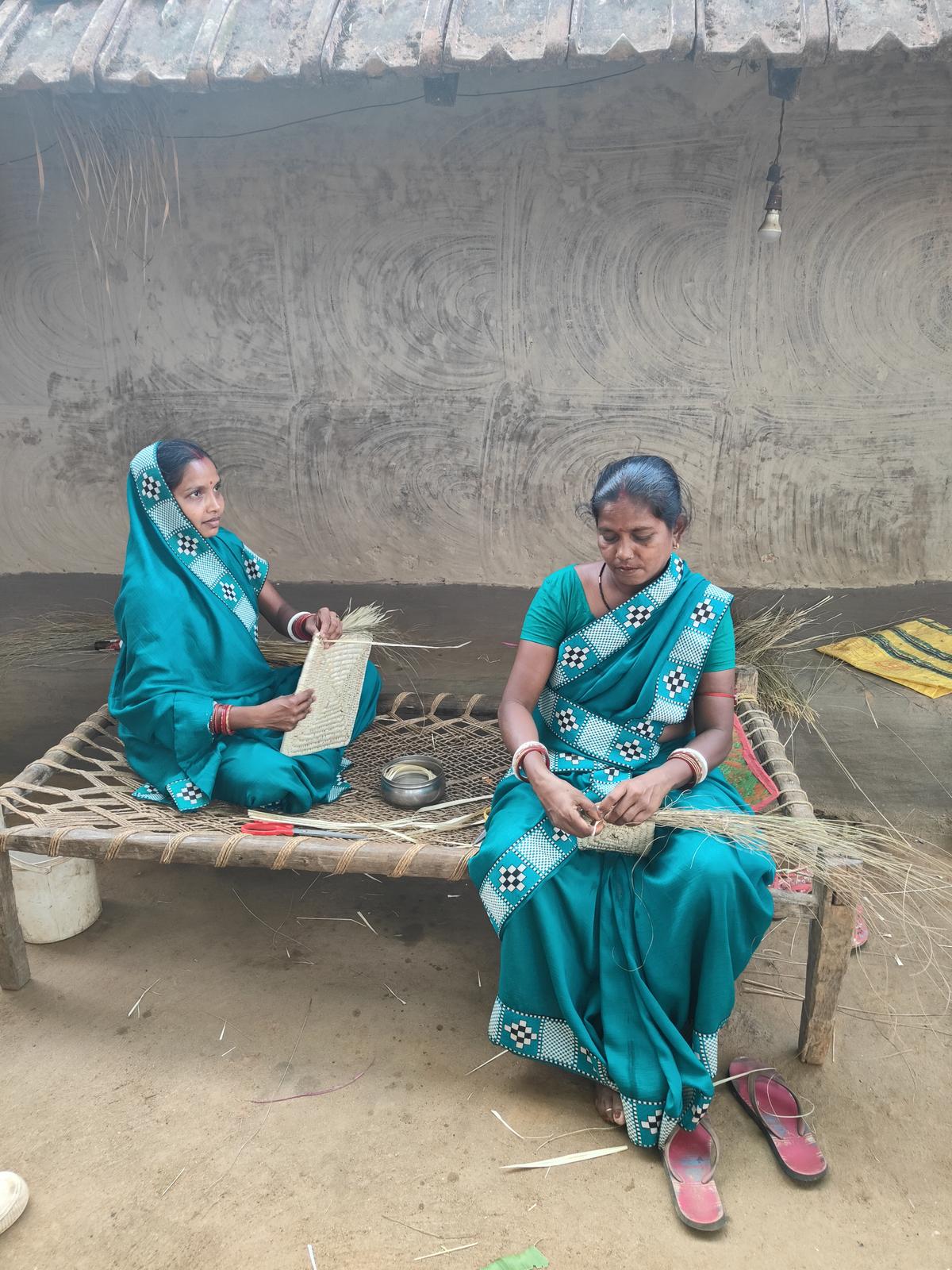
At a sabai grass cluster in Mayurbhanj
| Photo Credit:
S Poorvaja
During the pandemic, when orders to these clusters working with sabai grass and creating dokra jewellery (made using a wax-casting technique) began to get cancelled, efforts to give these artisans a channel to sell their products led to Mrinalika setting up Hasa Atelier, a boutique at the Belgadia Palace. “Guests and visitors to the palace can browse through the products we have. This was born out of wanting to have a strong identity and presence for Odisha craftsmanship,” she says.
What’s on our plates?
After eating the food in Belgadia for two days, we are only too eager to sign up for a cooking class with their resident chef. The meals at Belgadia are a good fusion of Bengali and Odia cuisine. The thalis we sample at lunch and dinner come with lembu bhatal (lemon rice), fresh chingdi checha (shrimp curry), moong mohan dal (lentils), and badi chura (crushed lentil dumplings). Our favourite is the bansha pora murgi, succulent chunks of chicken cooked inside bamboo that is served warm straight from the bamboo onto our plates. While our breakfast menus have toast, eggs, and juice, we gravitate towards warm, crispy chakulis, the Odia version of dosas served alongside ghugni or chickpeas in a mildly spiced gravy.
With West Bengal and Odisha always having been competitive with regard to their sweets, we cement our loyalties with Odisha’s crumbly, sweet chennapooda.
When it comes to all the outdoor activities one can partake in at Mayurbhanj, the cherry on the cake is a visit to the Simlipal elephant and tiger reserve. The staff at Belgadia highly recommend a visit there, and even show us videos and photos of rare sightings of a melanistic tiger.
There is however, much to do if you choose to laze around indoors, either in your palace suite or historical suite. Every nook and cranny of the palace is fascinating, and makes for endless Instagram opportunities. Described as an Art Deco sanctuary, every room inside the palace lends itself to a rich colour scheme. I make a mental note of the several sequestered spots, perfect for an afternoon cold coffee and a quick nap on the many wingback chairs and pouffes. True to its intent to host, there are dining spaces, a projector room, and even a library stacked with books that are over a 100 years old.
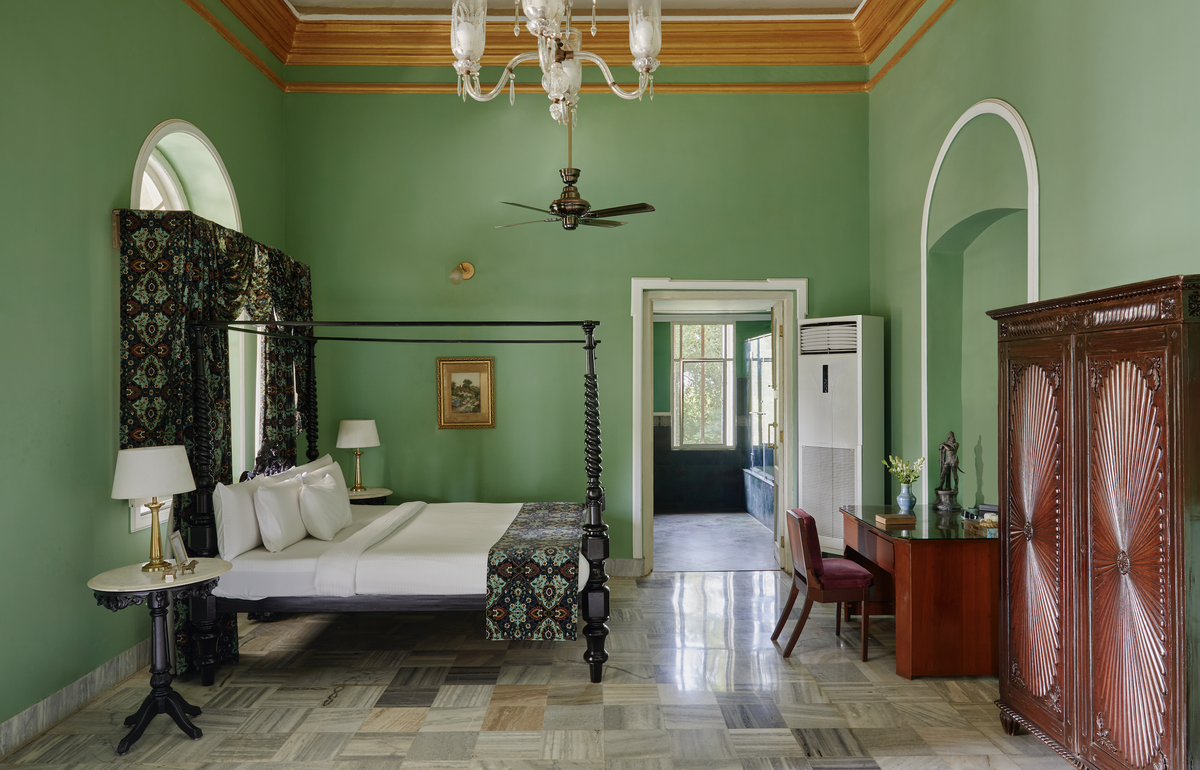
A suite at The Belgadia Palace
| Photo Credit:
Special Arrangement
“The palace was never in a dilapidated condition, and it has always been a lived-in space. My grandparents moved in here in the late 1990s and since then, it has always been buzzing with people,” Mrinalika says. When they began working on a renovation in 2019, she says they had to bring in someone who knew how to work with old homes and buildings. “It isn’t as easy as simply installing new wiring or drilling into walls. Every technical decision had to be well thought out, and we had to preserve the heritage and legacy of the palace,” she says. Structurally, there was little that was changed in the palace and they consciously worked on only the interiors and the renovations. While the main palace building houses six suites, the historical suites in the garden building have fascinating echoes of the past; the room that I stay in has elevated platforms and curved archways and I am later told that the palace kitchens used to be here.
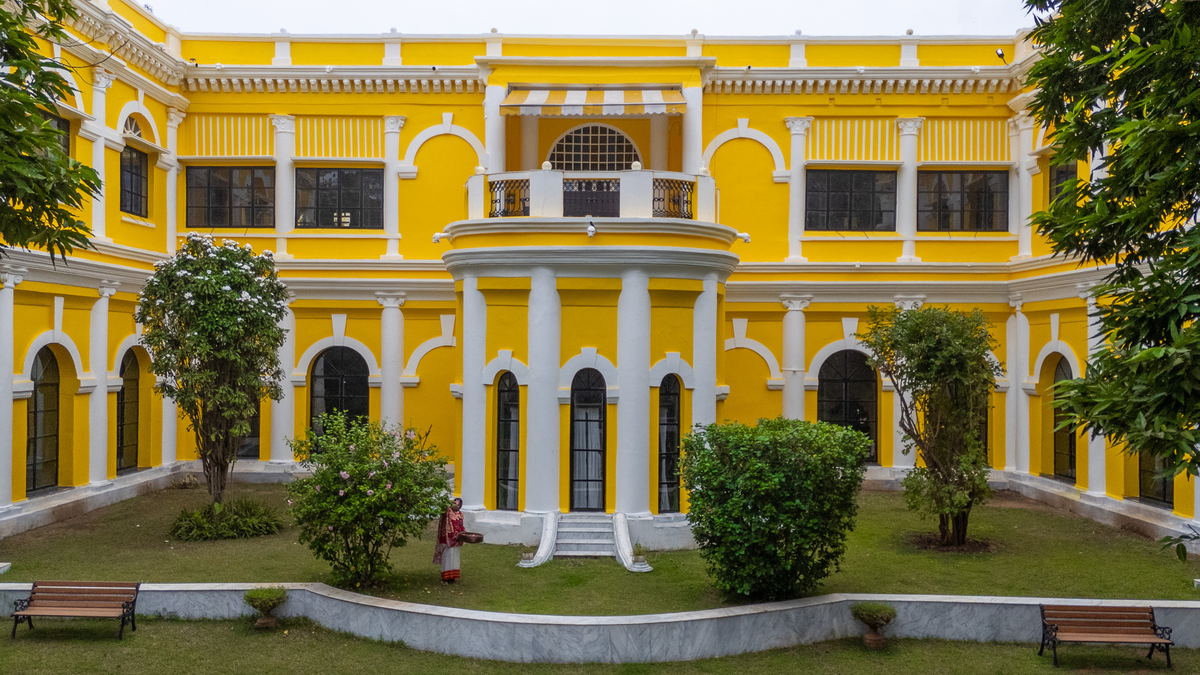
A view of The Belgadia Palace
| Photo Credit:
Special Arrangement
While the 12 rooms spread across the main palace and the garden buildings are open for guests round the year, the palace also welcomes guests who come in for day experiences and tours and more importantly, college students and youngsters from the region who want to tour the palace.
“We treat the palace like a living museum, and a team member escorts visitors through the property. There is much that is fascinating about the history, art, and culture of this region and we want to encourage both our visitors from the region and guests to partake in our celebration of Mayurbhanj and its legacy,” Mrinalika says.
The writer was at The Belgadia Palace, Mayurbhanj, on invitation from RARE India
Published – June 06, 2025 02:52 pm IST
